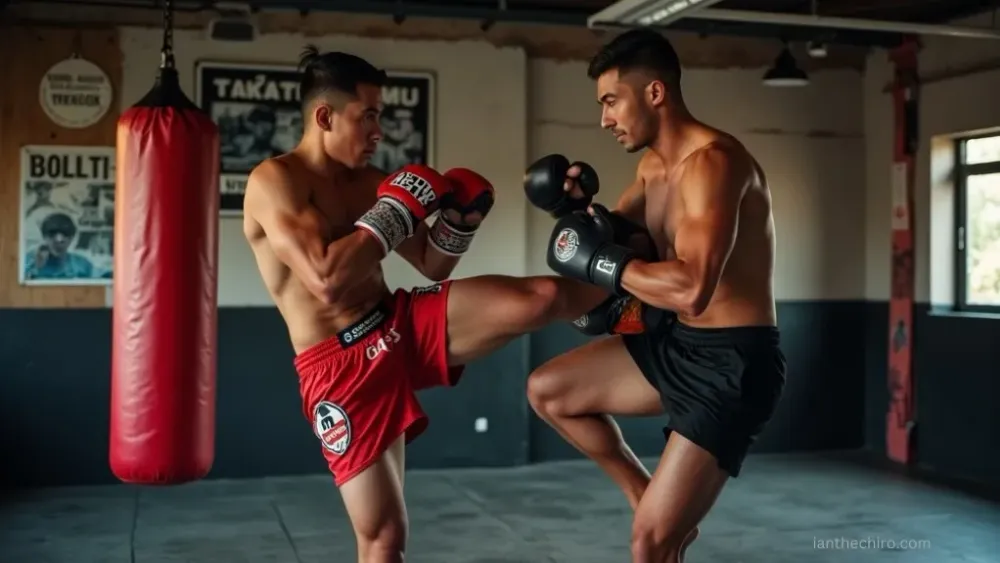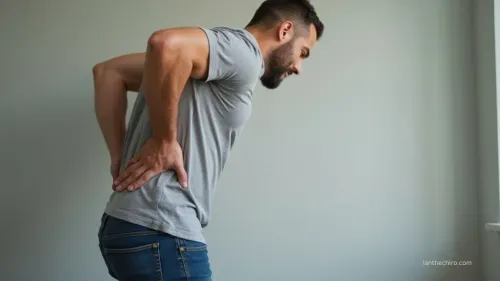Muay Thai Fighters' Recovery: Dry Needling for Thai Clinch Neck Strain + Spinal Alignment
If you’re battling neck strain from Thai clinch work, Ian The Chiro's dry needling targets your muscle knots and relieves tension fast, letting you recover quicker and hit harder. Combining this with spinal alignment strategies, like postural checks and specific mobility drills, protects your neck and prevents painful misalignments.
Evidence shows dry needling boosts blood flow, eases soreness, and restores your range of motion, so you’re back in the clinch sooner. Stick with these strategies and discover how to train safer and stronger.
Understanding Neck Strain From the Thai Clinch
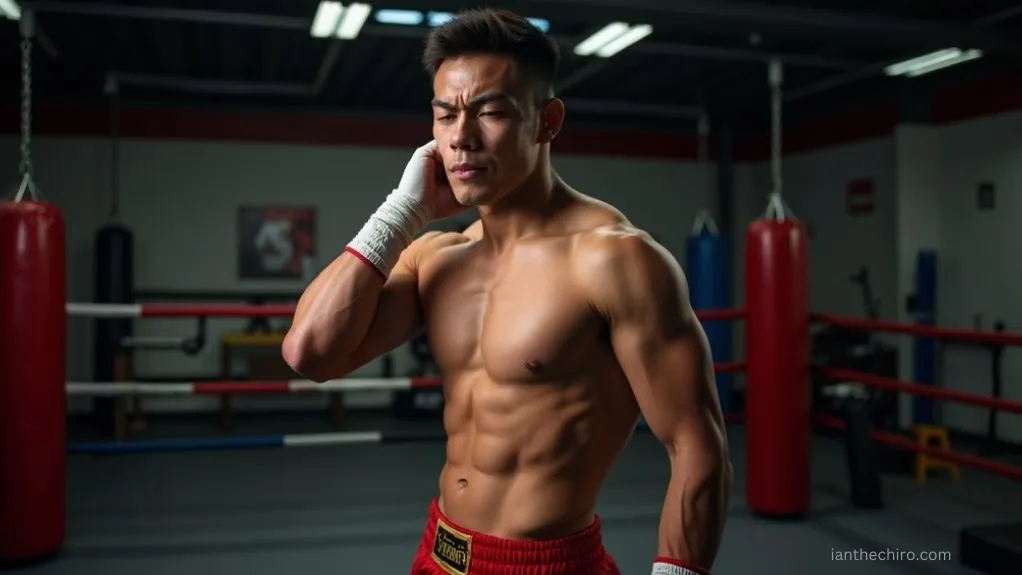
When you engage in the Thai clinch, your neck endures intense strain from sustained muscle tension, overstretched ligaments, and the constant battle for control. Repeated clinching sessions force your neck muscles to stabilise your head and absorb force, often leading to fatigue and micro-injuries.
If your technique slips or your posture falters, you risk overstretching ligaments and compressing nerves between cervical vertebrae. These injuries can cause stiffness, muscle tightness, headaches, or even jaw discomfort, limiting your range of motion and affecting performance.
Recognising early signs of strain, like reduced mobility or persistent soreness, is key to preventing more severe injuries. Prioritise proper technique, allow for recovery, and use targeted therapies to keep your neck resilient and ready for every clinch exchange.
How Dry Needling Relieves Muscle Tension and Pain
Although neck and upper back tension are common after tough clinch sessions, dry needling provides a direct solution by targeting the exact trigger points causing your discomfort. By inserting fine needles into these tight muscles, you can release stubborn knots and immediately reduce tension that limits your performance.
Dry needling boosts local blood flow, which speeds up the removal of metabolic waste and helps relieve muscle pain. It also deactivates hyperirritable spots within the neck muscles, delivering both rapid and long-lasting relief.
This evidence-based technique resets dysfunctional neuromuscular activity linked to clinch-induced neck strain, restoring your flexibility and range of motion. Clinical studies confirm that dry needling decreases soreness and improves muscle function, helping you recover faster and train harder in Muay Thai.
Supporting Spinal Alignment in Muay Thai Training
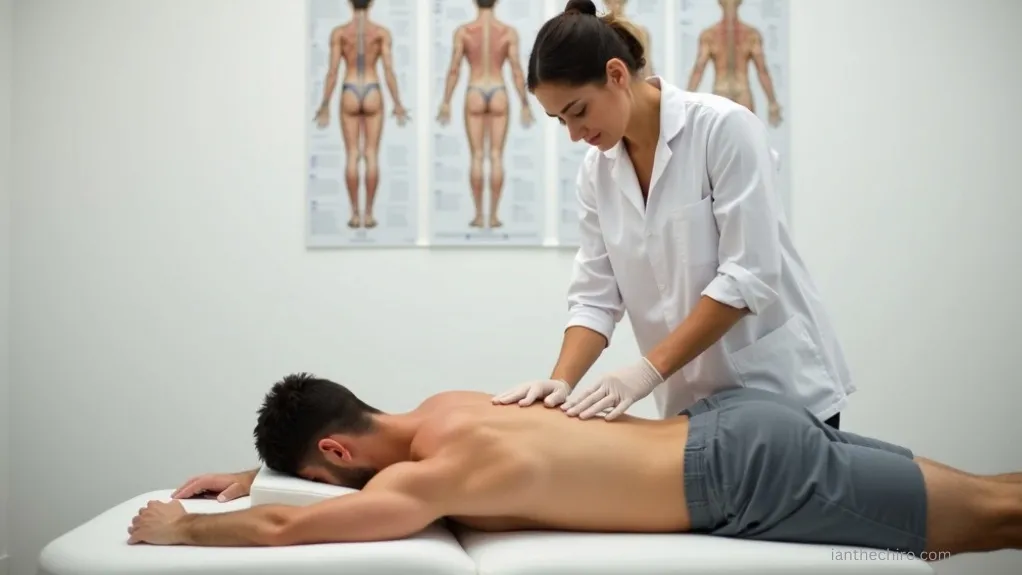
Because Muay Thai's clinch and striking techniques place intense demands on your neck and spine, prioritising spinal alignment is vital to staying powerful and injury-free.
Consistent clinch work and strikes can easily throw your cervical and thoracic spine out of alignment, increasing your risk of neck strain, nerve compression, and chronic pain.
To combat this, incorporate postural assessments and gentle spinal manipulations into your routine. Work with osteopathic or physical therapy professionals who can identify and correct subtle misalignments before they become injuries.
Add spinal-focused exercises and mobility drills to your training to maintain ideal posture and balance.
Integrating Dry Needling Into Your Recovery Routine
Building on strong spinal alignment, incorporating dry needling into your recovery plan targets the muscular imbalances and tension that clinch work often creates. By inserting thin needles into trigger points and tight fascia, you’ll actively release neck and spinal muscle knots, alleviate pain, and boost circulation.
Evidence shows this technique relieves myofascial pain quickly, improving your range of motion and decreasing nerve compression common after intense clinch exchanges. When you combine dry needling with manual therapy and corrective exercises, recovery accelerates, reducing soreness and helping you regain ideal alignment faster.
This integrated approach strengthens your resilience, so you can train harder and stay injury-free. Prioritising dry needling in your recovery routine means you’re giving your body the edge it needs for peak Muay Thai performance.
Tips to Prevent Neck Strain and Train Clinch More Safely
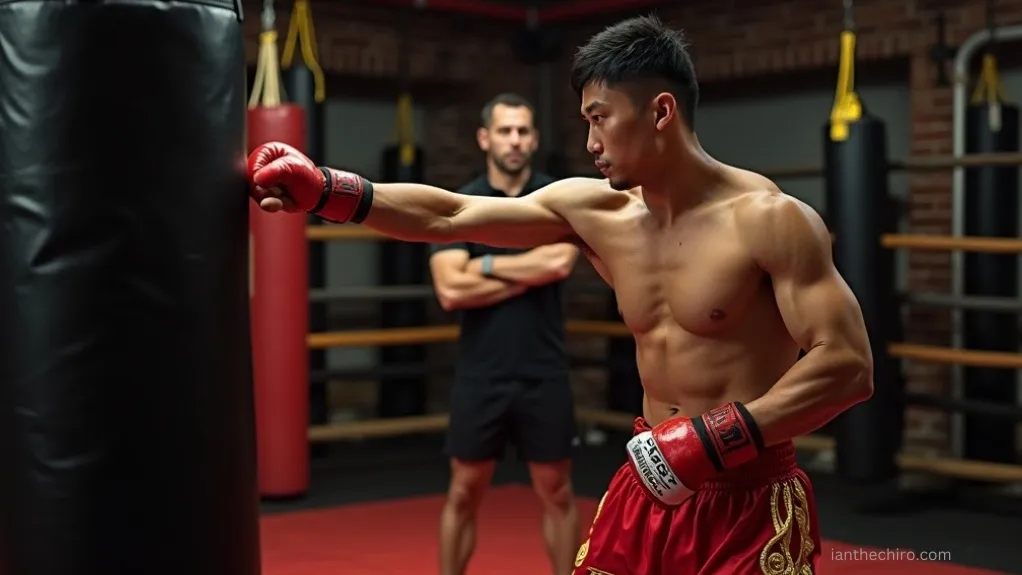
While clinch work is essential for Muay Thai dominance, prioritising proper technique and body positioning is crucial to safeguard your neck. Focus on keeping your spine aligned and your head upright during clinching to considerably reduce the risk of neck strain.
Maintain proper technique and upright posture in the clinch to protect your neck and reduce the risk of strain.
Strengthen your neck with exercises like ‘Yes-No-Maybe’ movements and weighted shrugs to build resilience against forceful clinch exchanges. Consistently incorporate flexibility and mobility drills to maintain a healthy range of motion and decrease ligament stress.
Schedule regular manual therapies, such as dry needling, to address tension and support spinal alignment. Always monitor your fatigue during training, and avoid excessive clinch rounds to prevent chronic neck strain.
These evidence-based strategies help you train clinch safely, ensuring long-term performance and injury prevention.
Frequently Asked Questions
How to Strengthen Neck for Clinch?
Use isometric holds, neck bridges, and slow, controlled neck movements. Add resistance tools and train deep neck flexors. If possible, get a professional assessment to build a routine that avoids overtraining or injury.
Why Does My Neck Hurt After Clinching Muay Thai?
It’s usually due to repeated strain on neck muscles and ligaments. Poor technique and lack of neck strength make it worse. Address these gaps and check for underlying injuries if the pain keeps coming back.
How Do You Prevent Neck Pain in Muay Thai?
Strengthen your neck, refine your clinch technique, and stretch consistently. Don’t overlook posture or muscle imbalances. Recovery routines and manual therapy go a long way in keeping pain under control.
How to Recover Fast After Muay Thai?
Active rest, light mobility drills, and basic cold therapy are solid starting points. Eat protein-rich meals, stay hydrated, and consider treatments like dry needling or spinal adjustments to speed things up.
Conclusion
It’s ironic, after all the hours you spend toughening your body for the Thai clinch, sometimes you need a tiny needle to release your real strength.
Dry needling doesn’t just tackle pain; it supports your spinal alignment and helps you recover faster, so you’re back in the gym, ready to dominate.
If you want longevity in Muay Thai, don’t just train harder, recover smarter. Embrace evidence-based recovery, and you’ll clinch with confidence, not just grit.





